Wondering how to get free energy efficient light bulbs for your home? Many households may qualify for free or discounted LED bulbs through local utility providers or government-backed programs. These initiatives aim to help residents lower their energy bills while promoting environmental sustainability. To qualify, you typically need an active utility account, meet income eligibility requirements, or live in a designated service area. Switching to LED lighting can reduce energy consumption by up to 80% compared to traditional bulbs, offering long-term savings and eco-friendly benefits. Some programs even include installation assistance or energy audits to further optimize your home’s efficiency. At NaturalLightLiving.com, we help homeowners stay informed about opportunities to upgrade their lighting at little to no cost. Read on to discover where to apply, what to expect, and how you can start saving energy today.
Video Energy Saving Tips for LED Bulbs
Key Takeaways
- Check Utility Providers – Many offer free or discounted LED bulbs based on account status and location.
- Explore Government Programs – State and federal initiatives help low-income households access energy-efficient lighting.
- Look for Community Resources – Food banks, housing agencies, and nonprofits often distribute free bulbs locally.
- Confirm Eligibility Requirements – Programs may depend on income, housing type, or energy provider.
- Plan Ahead for Availability – Supplies can be limited, so early application ensures faster access.
Program Types Offering Free LED Bulbs
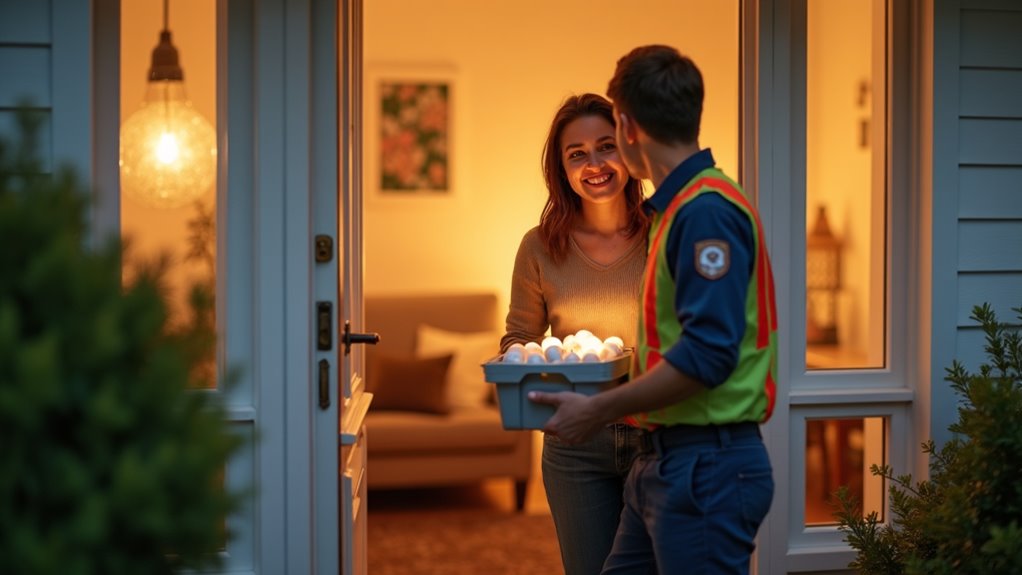
Numerous programs are available that offer free LED bulbs, reflecting a growing commitment to energy efficiency across multiple sectors. Utility company programs play a significant role, as many providers offer free or discounted LEDs to encourage homeowners to switch lighting types.
These initiatives often include energy audits to identify further savings opportunities. Additionally, government assistance programs may provide free LED bulbs as part of efforts to reduce emissions, enhancing access for those who qualify. Furthermore, community initiatives, such as partnerships between local governments and non-profits, effectively distribute LED bulbs, enhancing access for underserved populations.
For instance, programs like PSO’s Shine a Light distributed 122,000 LED bulbs through food pantries in 2023, showcasing collaborative efforts. Moreover, power outages can also highlight the importance of having efficient lighting alternatives readily available during emergencies.
Eligibility Criteria for Free Light Bulb Programs
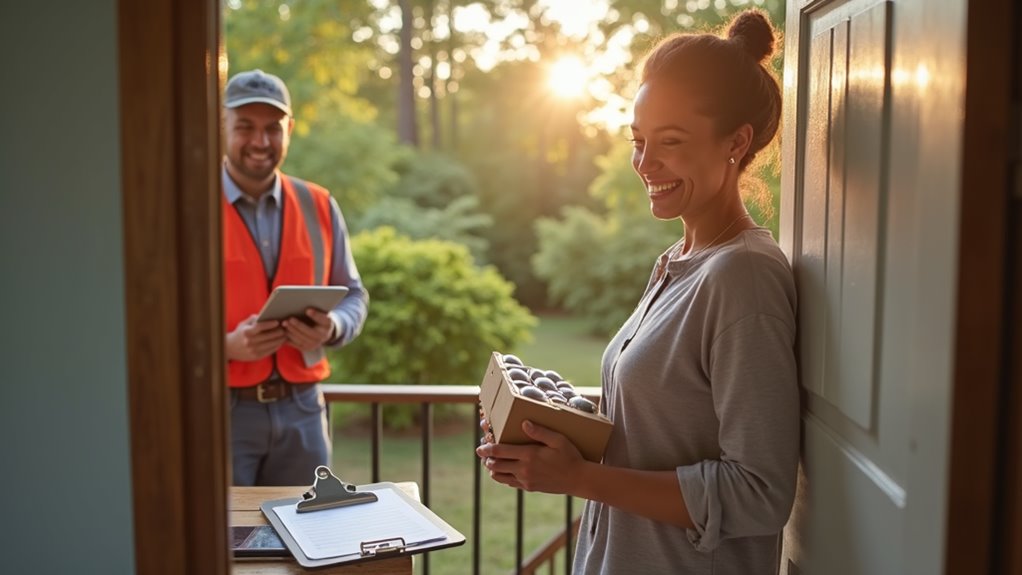
Various programs designed to provide free LED bulbs also incorporate specific eligibility criteria that potential beneficiaries must meet. Typically, these criteria include income requirements, which often hinge on household income relative to the federal poverty level. Additionally, eligibility might depend on utility partnerships, as applicants usually need to be customers of designated utility providers.
| Criteria | Requirements | Notes |
|---|---|---|
| Income Thresholds | Income at or below federal levels | Varies by household size |
| Utility Account Status | Active account in good standing | Residential customers only |
| Housing Type | Specific to homes or units | Renter approval may be needed |
| Program Limitations | One free pack per household/year | First-come, first-served basis |
| Geographic Restrictions | Area-specific, based on utilities | Priority communities targeted |
Benefits of Switching to Energy Efficient Lighting
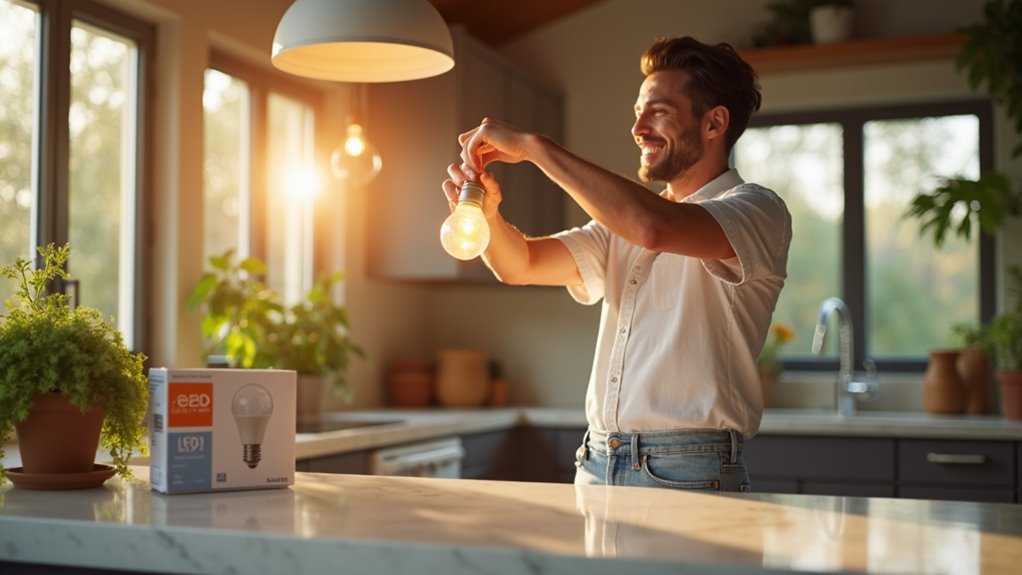
While many individuals may overlook the advantages of energy-efficient lighting, a closer examination reveals significant benefits that extend beyond mere economic savings.
The economic benefits are substantial; switching to LED and CFL bulbs can result in annual savings of £65 or €375-€625 for households, as energy-efficient bulbs use up to 80-90% less energy. Additionally, their longevity up to 50,000 hours reduces replacement frequency and maintenance costs.
Environmentally, these bulbs contribute to lower greenhouse gas emissions and less landfill waste, as they do not contain hazardous materials like mercury. Furthermore, the precise light directionality of LEDs helps minimize light pollution, enhancing overall ecological health.
Thus, the transition to energy-efficient lighting embodies both responsible economic and environmental choices.
How to Apply for Free LED Bulbs
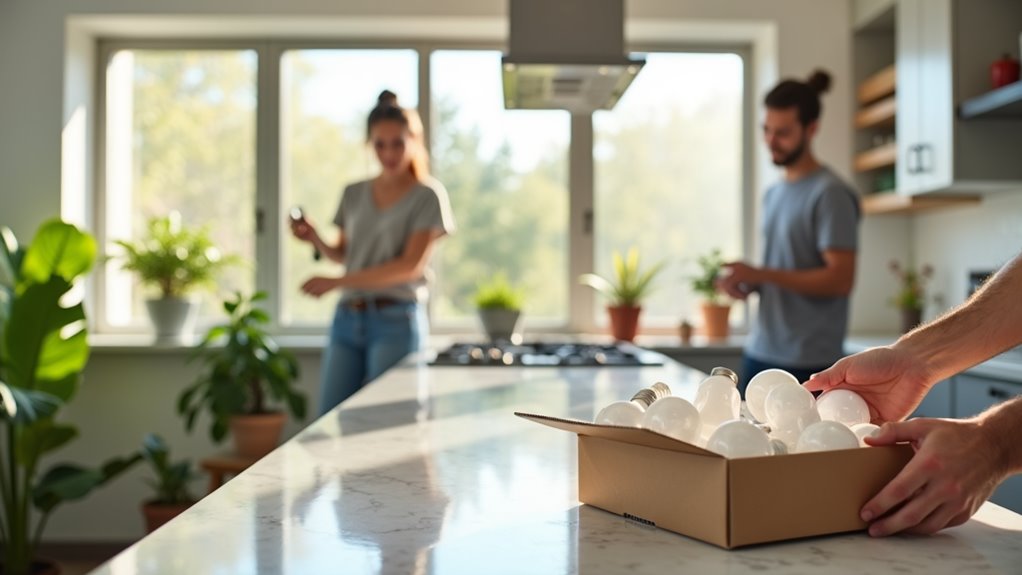
Applying for free LED bulbs can significantly enhance home energy efficiency and reduce electricity costs. Homeowners and renters should explore various avenues such as utility company programs, government initiatives, and non-profit organizations. Many utility companies offer LED bulb applications as part of energy audits, providing free bulbs along with conservation kits. Government programs may also facilitate subsidized replacements.
| Source Type | Benefits | Application Process |
|---|---|---|
| Utility Companies | Free bulbs, energy audits | Check online, call for details |
| Government Initiatives | Subsidized replacements, eligibility | Contact approved suppliers |
| Non-Profit Programs | Support for low-income residents | Income checks for eligibility |
Limitations and Considerations to Keep in Mind
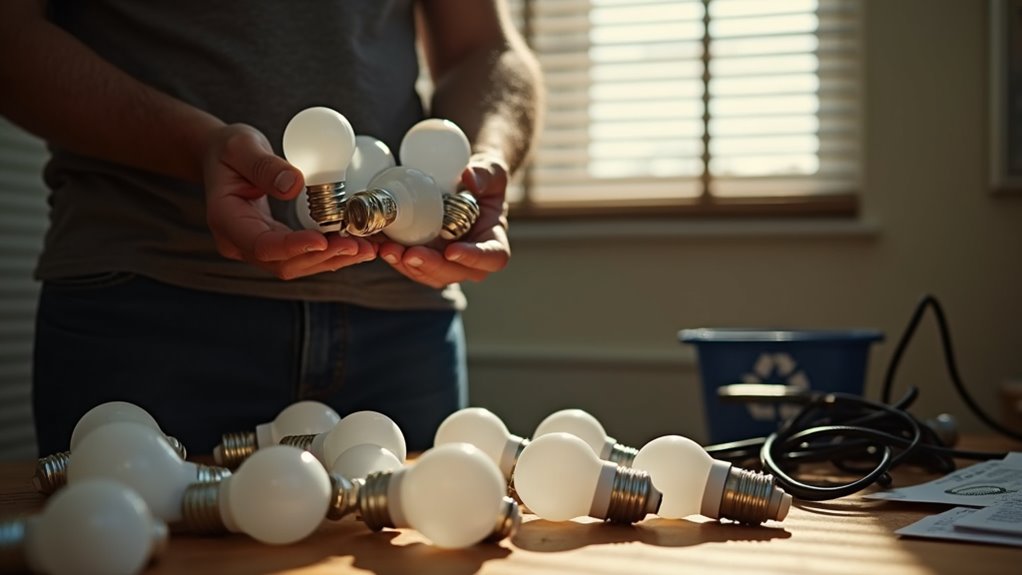
Although free LED bulb programs present significant opportunities for homeowners to improve energy efficiency, several limitations and considerations must be acknowledged to ensure a successful application and utilization experience.
Supply shortages often limit availability, compelling participants to act quickly and navigate eligibility restrictions, which may include income qualifications and geographic limitations.
Additionally, installation challenges may arise, such as the need for professional assistance, fixture upgrades, or compatibility issues with existing dimmers, resulting in hidden costs.
Furthermore, low-quality bulbs can pose performance concerns, affecting lifespan and color quality.
Recognizing these factors will help homeowners make informed choices, balance potential benefits against obstacles, and maximize the value of free energy-efficient lighting solutions.
Conclusion
Getting free energy efficient light bulbs is one of the easiest ways to cut your electricity costs and contribute to a greener planet. Whether through your local utility provider, community outreach, or government-sponsored energy programs, there are multiple paths to upgrade your lighting without spending a dime. These initiatives not only help reduce household expenses but also encourage sustainable energy habits that benefit everyone. If you’re ready to make the switch, start by contacting your utility company or exploring local assistance listings to check your eligibility.
Taking this simple step can lead to lasting energy savings and a brighter, more efficient home. Visit NaturalLightLiving.com to learn more about available lighting programs, sustainability tips, and other ways to enhance your home’s energy performance.


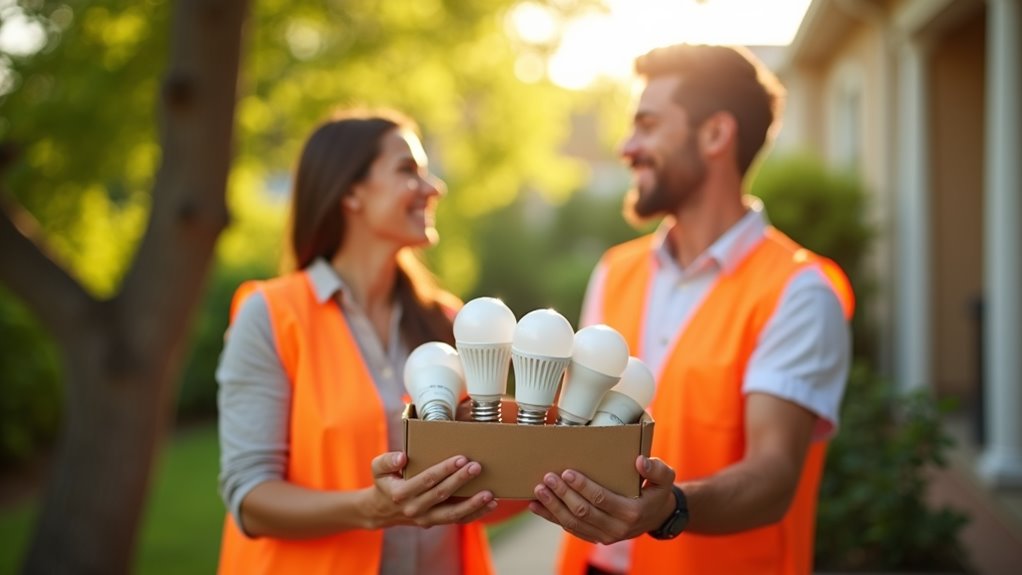
Bài viết cùng chủ đề:
2025’s Brightest Outdoor LED Bulbs for Safety and Style
Are Clear Light Bulbs Brighter Than Frosted?
Best Security Flood Light Bulbs for Outdoor Protection
How do smart light bulbs work?
Most Energy Efficient LED Light Bulbs to Buy
Top 5 Spare Christmas Tree Light Bulbs for a Bright Holiday